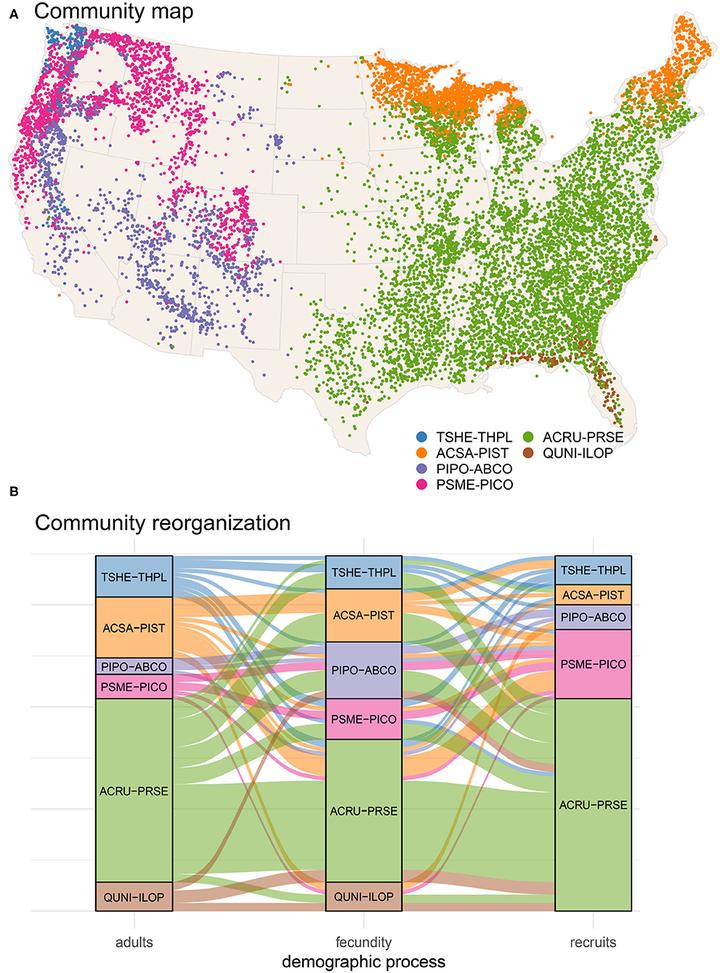Niche shifts from trees to fecundity to recruitment that determine species response to climate change
 Title: Map of community assemblages (A) and reorganization as an alluvial diagram (B). Community clustering is based on adult tree response matrix (see Figure 3a of the pdf). (B) Shifts in assemblages across the three demographic stages (adult, fecundity, and conditional recruits) in eighty-seven species. Flows are color-coded by adult membership in communities mapped in (A)
Title: Map of community assemblages (A) and reorganization as an alluvial diagram (B). Community clustering is based on adult tree response matrix (see Figure 3a of the pdf). (B) Shifts in assemblages across the three demographic stages (adult, fecundity, and conditional recruits) in eighty-seven species. Flows are color-coded by adult membership in communities mapped in (A)
Abstract
Anticipating the next generation of forests requires understanding of recruitment responses to habitat change. Tree distribution and abundance depend not only on climate, but also on habitat variables, such as soils and drainage, and on competition beneath a shaded canopy. Recent analyses show that North American tree species are migrating in response to climate change, which is exposing each population to novel climate-habitat interactions (CHI). Because CHI have not been estimated for either adult trees or regeneration (recruits per year per adult basal area), we cannot evaluate migration potential into the future. Using the Masting Inference and Forecasting (MASTIF) network of tree fecundity and new continent-wide observations of tree recruitment, we quantify impacts for redistribution across life stages from adults to fecundity to recruitment. We jointly modeled response of adult abundance and recruitment rate to climate/habitat conditions, combined with fecundity sensitivity, to evaluate if shifting CHI explain community reorganization. To compare climate effects with tree fecundity, which is estimated from trees and thus is “conditional” on tree presence, we demonstrate how to quantify this conditional status for regeneration. We found that fecundity was regulated by temperature to a greater degree than other stages, yet exhibited limited responses to moisture deficit. Recruitment rate expressed strong sensitivities to CHI, more like adults than fecundity, but still with substantial differences. Communities reorganized from adults to fecundity, but there was a re-coalescence of groups as seedling recruitment partially reverted to community structure similar to that of adults. Results provide the first estimates of continent-wide community sensitivity and their implications for reorganization across three life-history stages under climate change.
Research Highlights
- Conditional recruits respond to climate and soil the same way as adults
- Response of seed production to climate and soil are significantly different compared to other two life stages
- Substantial reorganizations happen from adults to seed production
- There was a re-coalescence of groups as seedling recruitment partially reverted to community structure similar to that of adults